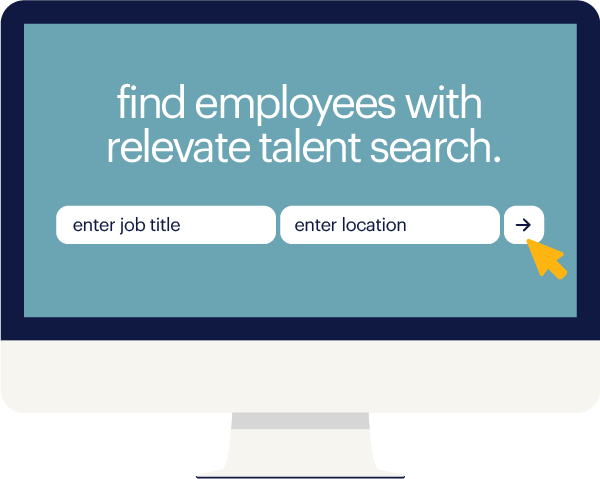Between childcare concerns, replenished savings accounts and increased job-seeker selectivity, there are a lot of factors keeping people out of the workforce right now. The U.S. economy added only 194,000 jobs in September, and there are still five million fewer people working (and three million fewer looking for work) than there were before the pandemic.
While addressing many of these factors is outside of your control, that rule doesn't apply to one of the major areas that continues to hold workers back — workplace safety.
So what are the current worker concerns you should be addressing, and what's the right strategy to employ when tackling them? We'll share the latest job seeker sentiments and help you create, communicate and enforce safe workplace practices to protect your current team — and attract new talent.
workplace safety is still a concern in 2021
At the height of the pandemic, workplace safety was understandably top of mind with onsite employees everywhere. In fact, workers who felt unsafe were three times more likely to look for a new job. While the world has come a long way from where it was in 2020, workplace safety remains a major concern for employees. In fact, despite widespread vaccination and a disease in retreat, a recent Randstad survey found nearly three-fourths (73%) of American workers remain concerned about the level of safety standards and overall cleanliness at their workplaces. Nearly the same amount, 71 percent, said they wanted their employers to implement new sanitation practices. And that's to go along with other onsite safety protections revealed in an earlier Randstad survey, like:
But alleviating employee concerns around COVID-19 will be far more complex than simple (yet still important) sanitation improvements. Consider the following top safety concerns among employees:
of workers said they'd like their employer to require proof of vaccination before reopening
cited uncertainty around the vaccination status among their colleagues as a top concern
consider coworkers behavior as their first or second concern about onsite work
Compared to concerns like these, which deal with individual preferences, behaviors and attitudes outside your control, improving sanitation practices seems like a breeze. If only it were that simple.
However difficult these conversations around workplace safety may be, employees have made their preference clear: After 18 months of uncertainty, they're expecting their employers to lead the charge and take a stand when it comes to safety.
how to alleviate vaccine concerns
Broaching the subject of vaccination as an employer is tricky, especially given the current state of today's talent market. Take a hard line on either side of the debate, and you risk alienating a significant portion of the talent pool, an outcome that few employers can afford. Compounding the challenge is the fact that local and federal regulations around vaccine mandates not only differ — they're still in flux — which can make creating a solid workplace safety plan an exercise in near futility.
And yet, the numbers can't be ignored. Vaccine concerns make up a significant portion of current employee concerns. So how can you go about addressing them in the right way?
Depending on the size and location of your company, the decision may have already been made for you: The federal government has made vaccines mandatory for executive branch workers, and now, just recently, for public-sector businesses with 100 or more employees as well. However, these mandates aren't set to take effect until the new year. So in the meantime, or if your company doesn't meet the mandate requirements, how should you proceed?
With only 13 percent of companies having adopted their own vaccine mandates, encouraging vaccines has emerged as a highly palatable middle ground for employers. Supporting vaccinations, while providing employees with informational resources and access to shots, has enabled employers to embody the safety-leadership role today's workers want, while still allowing some breathing room for employees to make their own decisions.
communication is key to adherence
The potential for virus variants can't be ignored and safety recommendations are subject to change: Against this backdrop of mass uncertainty, employees are turning to their employers to provide some semblance of solid ground. No matter the policies you end up creating, if you don't communicate them clearly, employee adherence to workplace safety rules will suffer, leading to further infractions and a worsening of the very concerns you're trying to alleviate.
Remember, coworker behavior was a top concern of survey respondents, which means creating and disseminating clear workplace safety requirements along with an enforceable code of conduct is now a must. Communicate your current policies clearly, and share the organizational reasoning behind each one, to get all your employees on board. Make sure your workforce understands that company polices are at the whim of an unpredictable virus as well as yet-to-be-determined federal regulations. That way, if you need to make course corrections along the way, they'll be backed by understandable reasoning, and not appear to have come out of thin air.
key takeaways
Employers looking to hire today have a lot of competing priorities on their plates. Between new benefits and more flexible working arrangements, businesses have a lot of work to do to catch up to current job seeker expectations — and that includes delivering on workplace safety.
Reevaluate your company's sanitation and health practices to meet job seeker expectations around measures like mask mandates, social distancing and more. Develop and disseminate a formal company policy around vaccination and testing, and hold workers accountable to them, to further ease concerns.
Take these steps, and you'll not only be providing a safe environment for your current workforce, but improving your chances of helping it grow. Job seekers are in the driver's seat right now, but demonstrating your commitment to workplace safety is one of the most effective ways to position yourself as an employer of choice.
For more insights into staffing, engagement, retention and more, visit the Randstad Learning Center.







